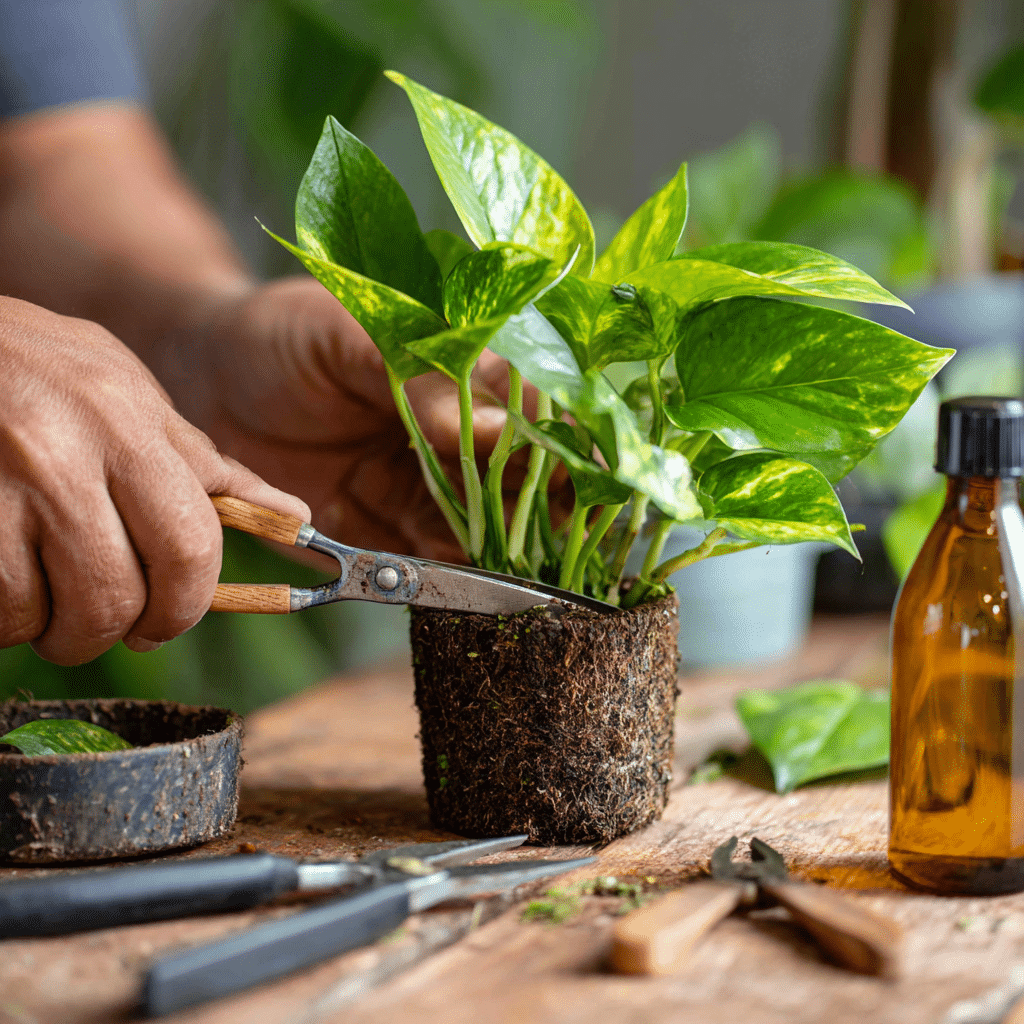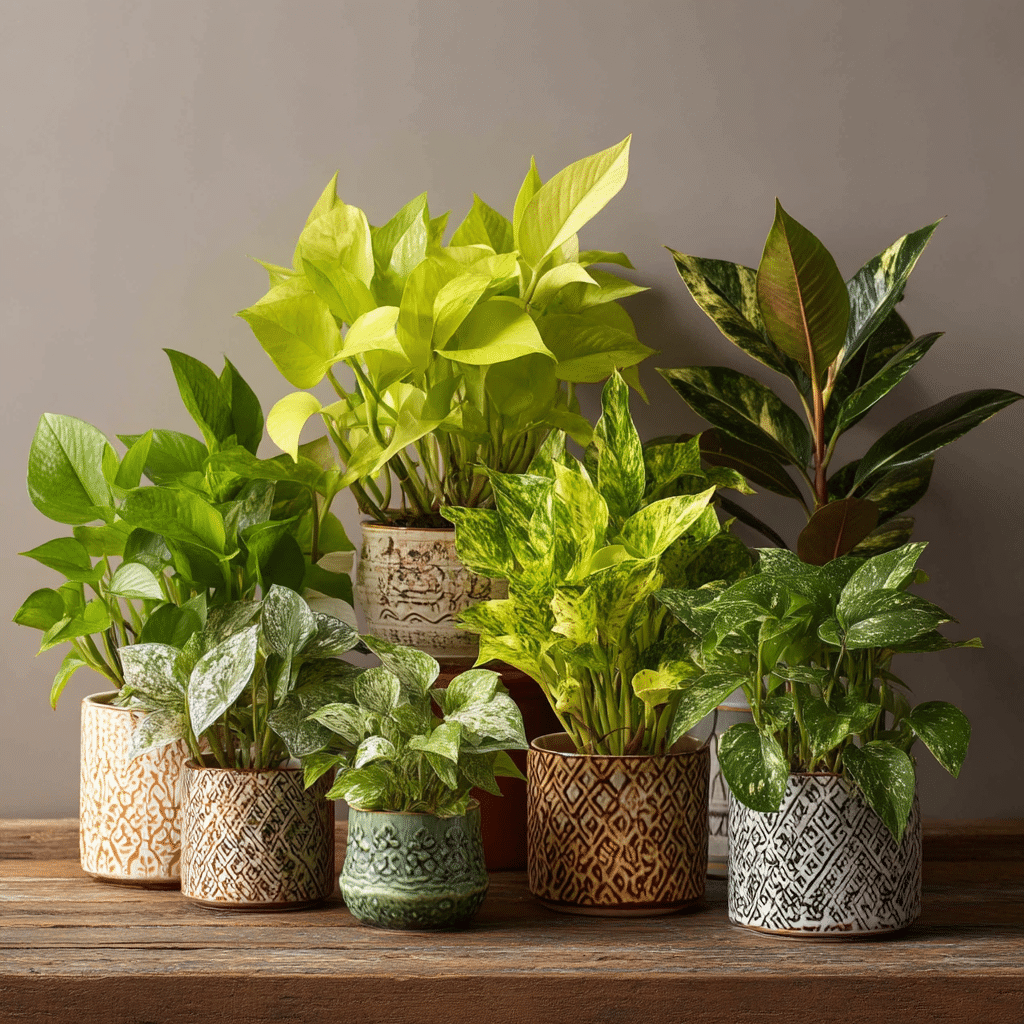Pothos plant care is one of the easiest and most rewarding tasks for any indoor gardener. Known for its trailing vines and vibrant, heart-shaped leaves, the pothos plant thrives in a variety of indoor conditions—making it a favorite for beginners and experts alike.
If you’re wondering how to care for a pothos plant indoors, the good news is that this tropical vine is incredibly low-maintenance. It grows well in bright or low light, tolerates occasional neglect, and even purifies the air in your home.
With just a few simple tips and the right environment, you can enjoy lush, cascading pothos vines that bring life and greenery to any space, from shelves and desks to hanging baskets and window sills.
Propagating Pothos
One of the best things about the pothos plant is how easily it can be propagated. Whether you’re growing your collection or sharing cuttings with friends, you can create new plants from healthy vines with minimal effort.
How to Propagate a Pothos Plant:
- Choose a Healthy Vine: Select a stem with several leaves and visible nodes (small bumps where roots grow).
- Make the Cut: Use clean scissors to snip just below a node, ideally 4–6 inches long with 2–4 leaves.
- Remove Lower Leaves: Strip off the bottom leaves to leave the node exposed.
- Root in Water or Soil:
- Water method: Place the cutting in a clear jar of water. Change the water every few days. Roots will appear in 1–2 weeks.
- Soil method: Plant directly in moist potting mix. Keep warm and humid for the best results.
- Transplant: Once roots are about an inch long (in water), move the cutting to soil and continue standard pothos plant care.
Propagation is a great way to create a fuller look by planting multiple rooted cuttings in the same pot.
Requirements for Growing Pothos Indoors
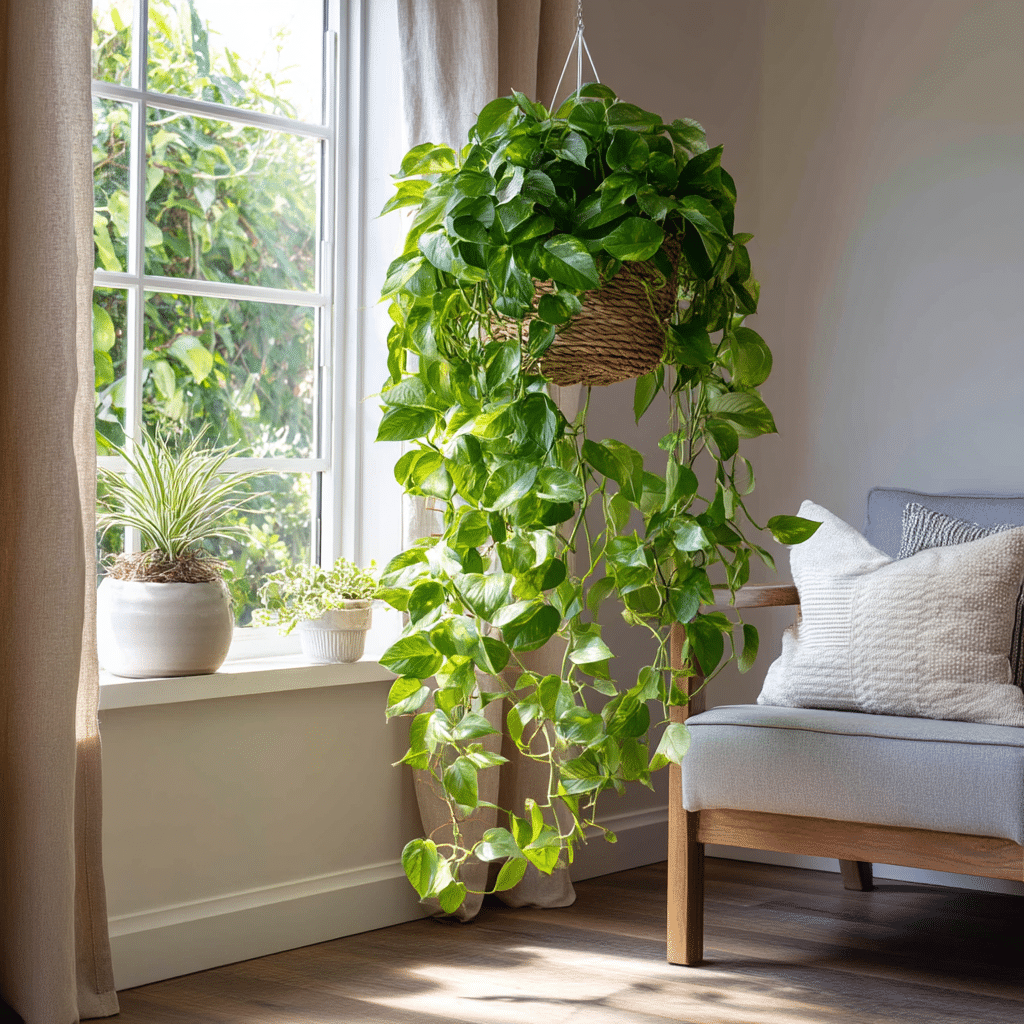
To keep your pothos plant healthy and thriving, it’s important to provide the right indoor conditions. Fortunately, this houseplant is very adaptable and forgiving—but meeting its basic needs will help it grow faster and look fuller.
Light
- Prefers bright, indirect sunlight
- Tolerates low light but may lose variegation
- Avoid direct afternoon sun—it can scorch the leaves
- Rotate the plant regularly for even growth
Soil
- Use a well-draining, nutrient-rich potting mix
- A mix of potting soil, peat moss, and perlite works well
- Avoid heavy soils that retain too much moisture
Water
- Water when the top 1–2 inches of soil feel dry
- Don’t overwater—soggy soil leads to root rot
- Leaves may droop when thirsty and perk up after watering
Temperature and Humidity
- Ideal temperature: 60–85°F (15–30°C)
- Normal indoor humidity is usually sufficient
- For extra humidity, use a pebble tray or occasional misting
Support
- Use a moss pole, trellis, or string to encourage upward growth
- Climbing promotes larger leaves and a more mature appearance
- Letting it trail works too—perfect for hanging baskets and shelves
With these basic conditions in place, your pothos plant will stay vibrant, lush, and resilient.
Pothos Plant Care Tips
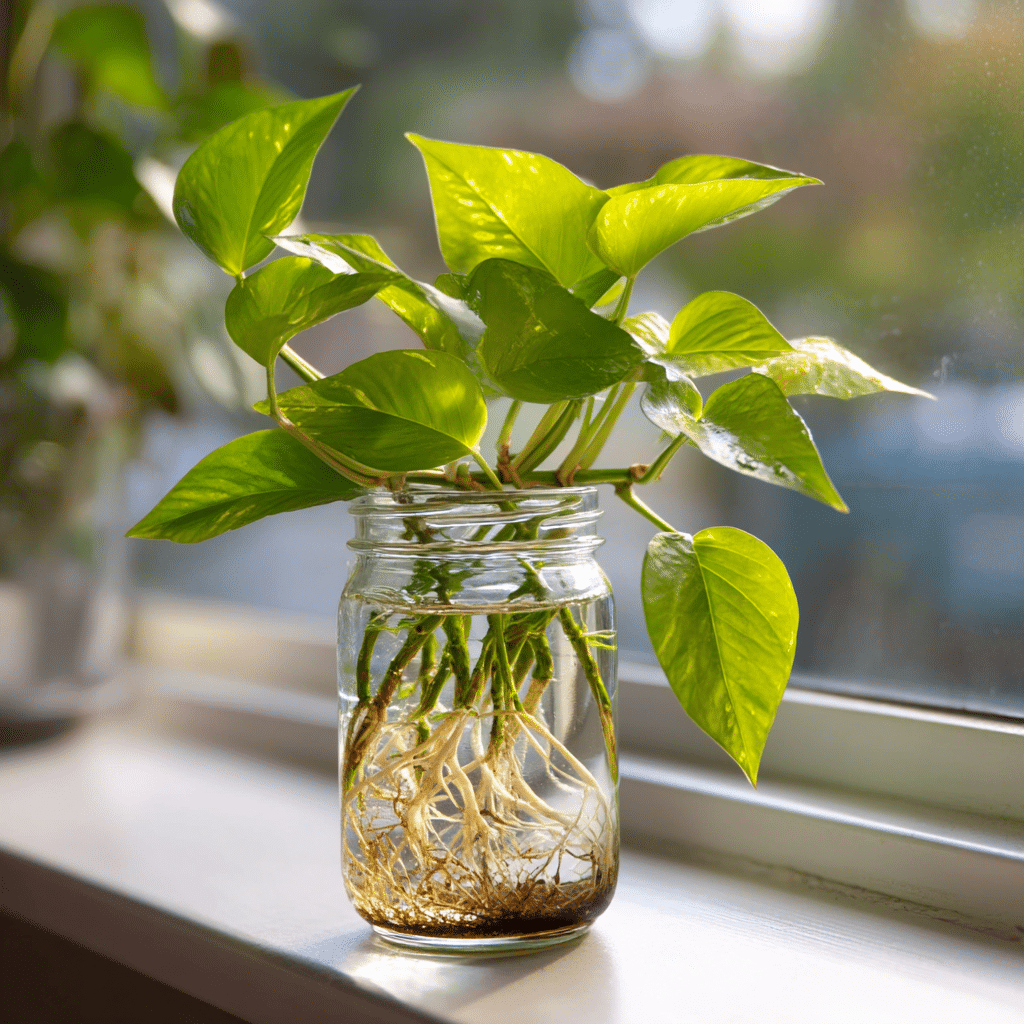
Once your pothos plant is established, ongoing care is simple. Regular attention to feeding, repotting, and pruning will keep it healthy and looking its best.
Fertilizer
- Use a balanced liquid fertilizer (e.g., 20-20-20) every 4–6 weeks during spring and summer
- For weaker solutions (¼ to ½ strength), you can feed more frequently—every 2–3 weeks
- Yellow or burned leaf tips may indicate overfertilization; if so, flush the soil and cut back on feeding
Repotting
- Pothos grow well slightly root-bound, but repot when roots start circling the pot or popping out the drainage holes
- Choose a new pot about 2 inches wider than the current one
- Best time to repot is in spring or summer, when the plant is actively growing
Pruning
- Trim yellowing, leggy, or damaged leaves regularly to encourage bushier growth
- Cut stems just above a node to stimulate branching
- Want a fuller plant? Replant healthy cuttings back into the same pot
Regular pruning also helps control the size of your pothos plant, especially in smaller spaces.
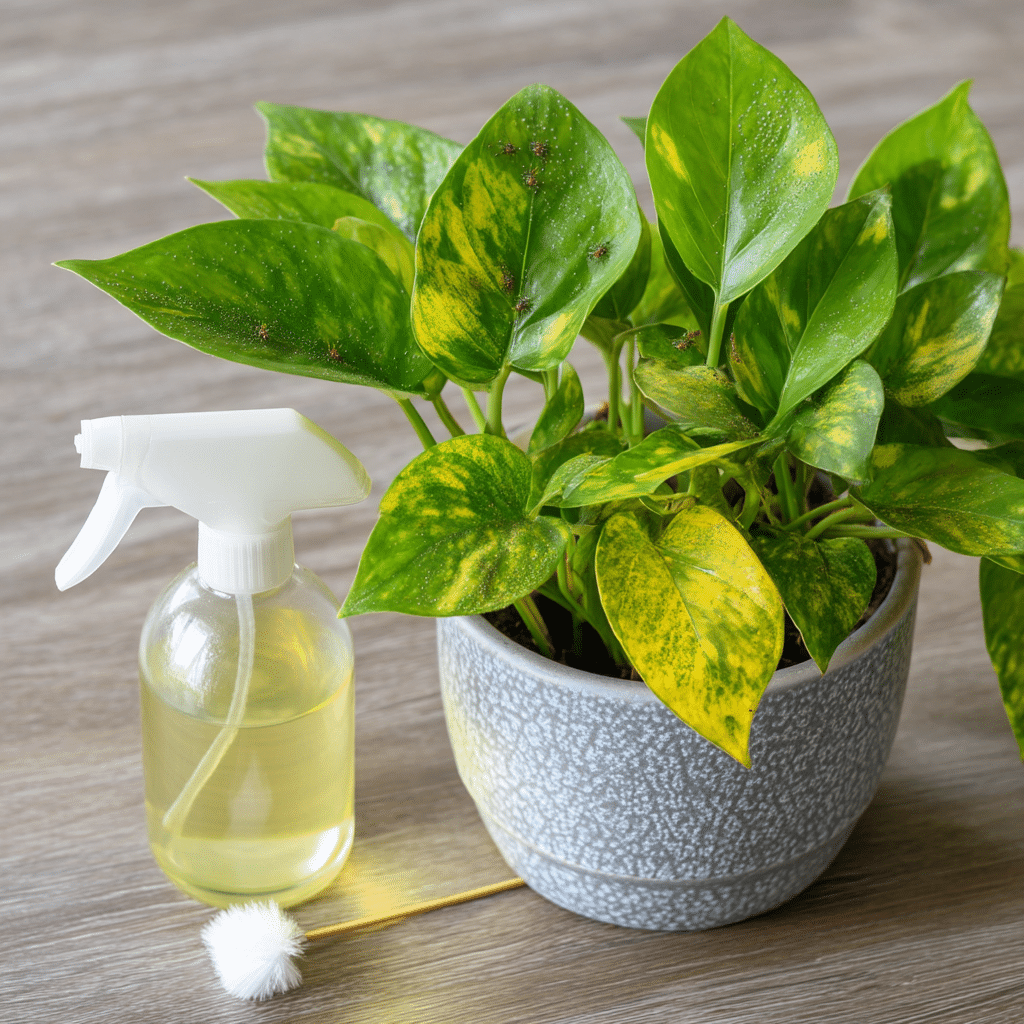
Pests and Diseases
The pothos plant is generally low-maintenance and pest-resistant, but like all houseplants, it can occasionally run into trouble. Catching issues early is key to keeping your plant healthy.
Common Pests
- Spider mites – Tiny pests that create webbing on leaves. Look for yellow speckling or dry patches.
- Mealybugs – Appear as white, cottony clumps on stems and leaf joints.
- Scale insects – Hard, shell-like bumps on stems or leaf undersides.
How to treat:
Wipe affected areas with a cotton swab dipped in rubbing alcohol. For heavier infestations, use insecticidal soap or neem oil spray.
Common Diseases
- Root rot – Caused by overwatering and poor drainage. Symptoms include blackened roots and mushy stems.
- Leaf spot – Yellow or brown patches that can spread across the foliage.
How to prevent:
- Avoid overwatering
- Ensure good air circulation
- Remove affected leaves
- Use sterile tools when pruning
By staying attentive to watering and checking leaves regularly, you can easily keep your pothos plant pest- and disease-free
Growing Pothos in Water
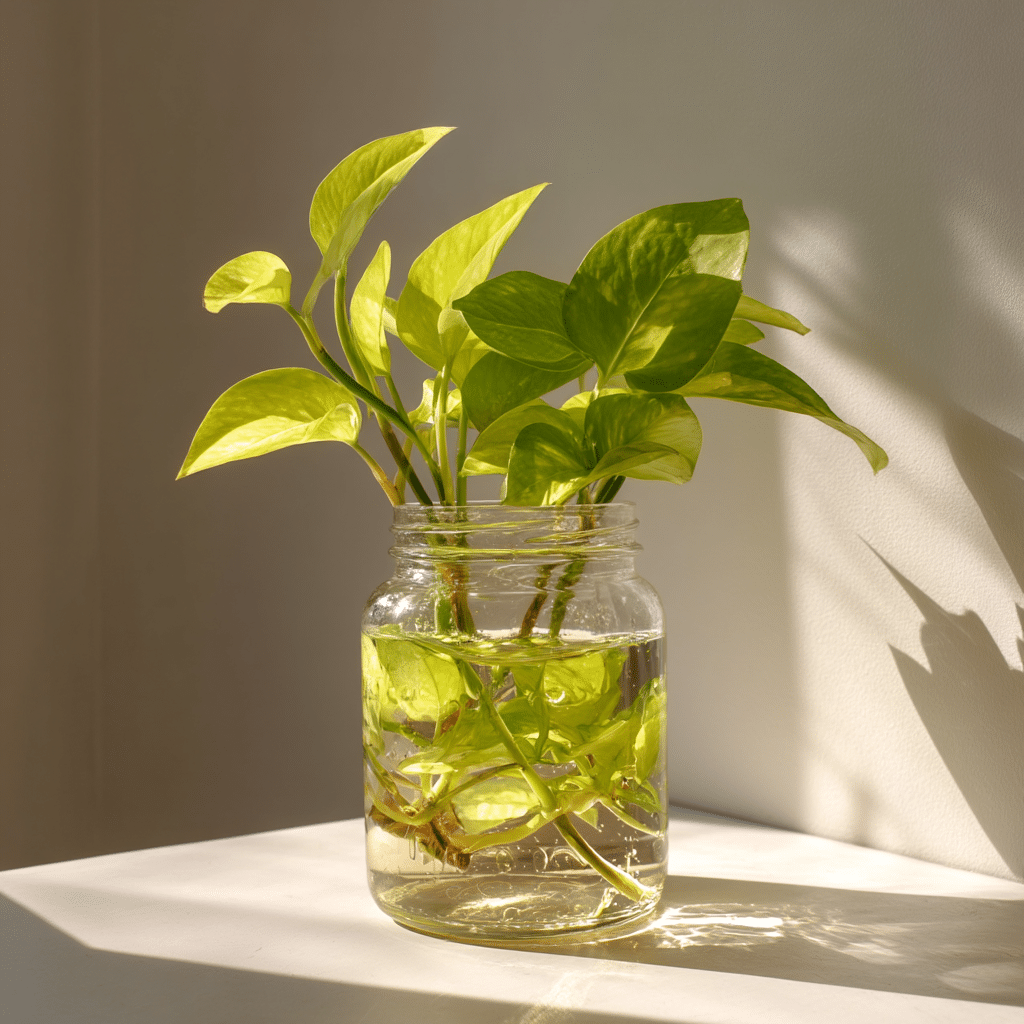
If you want a cleaner, soil-free option, you can grow a pothos plant entirely in water. This method is perfect for desktops, shelves, or minimalist spaces where soil might be messy or inconvenient.
How to Grow Pothos in Water:
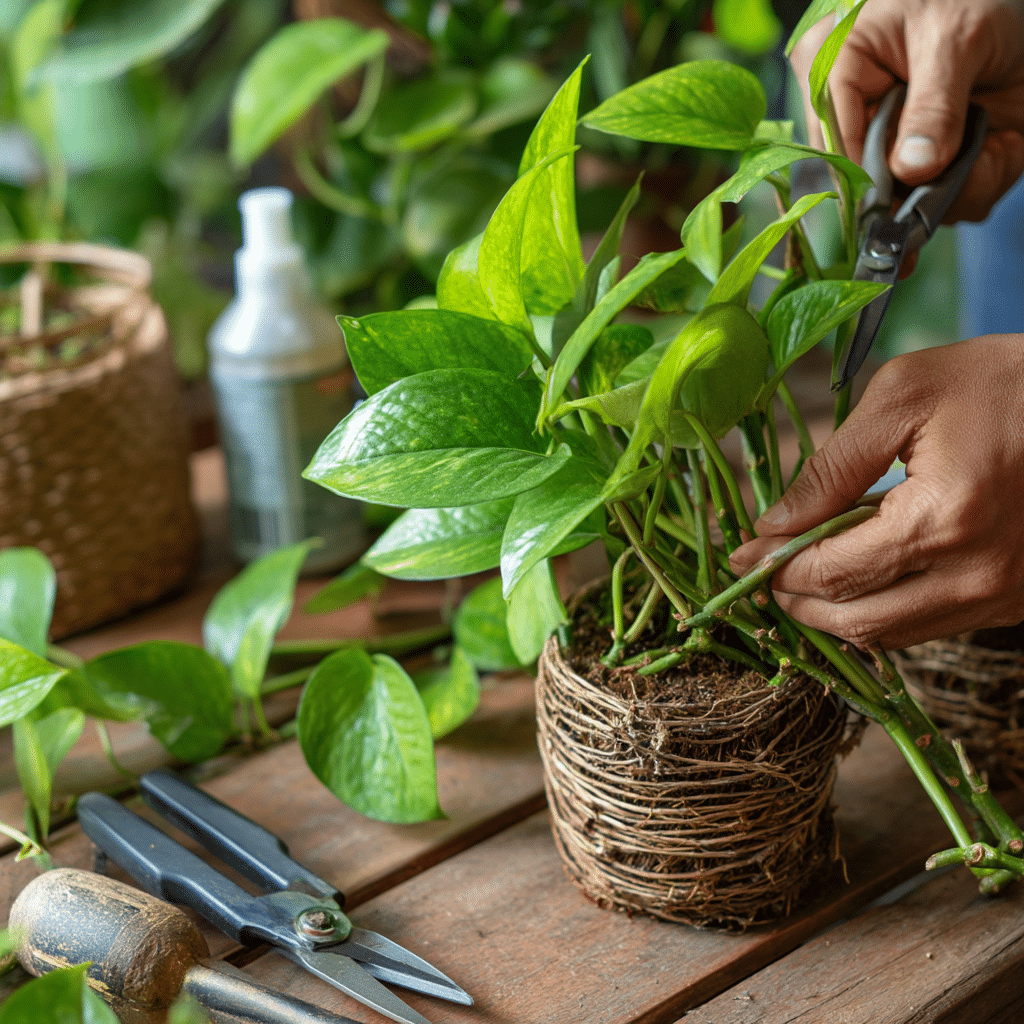
- Take a Healthy Cutting: Choose a 4–6 inch vine segment with 2–3 leaves. Cut just below a node.
- Remove Lower Leaves: Leave at least one node exposed to be submerged in water.
- Place in a Glass Jar or Vase: Use a clear container so you can monitor root growth.
- Keep the Water Fresh: Change the water every 5–7 days to prevent bacteria buildup.
- Bright, Indirect Light: Place your jar where it will get plenty of filtered light, but no direct sun.
Pothos will grow long, trailing roots in water. While growth may be slower than in soil, a pothos plant kept in water can still live for years if maintained well.
For an extra aesthetic touch, try growing them in mason jars, hanging glass bulbs, or even test tubes mounted on a wall.
Indoor Uses and Benefits of Pothos
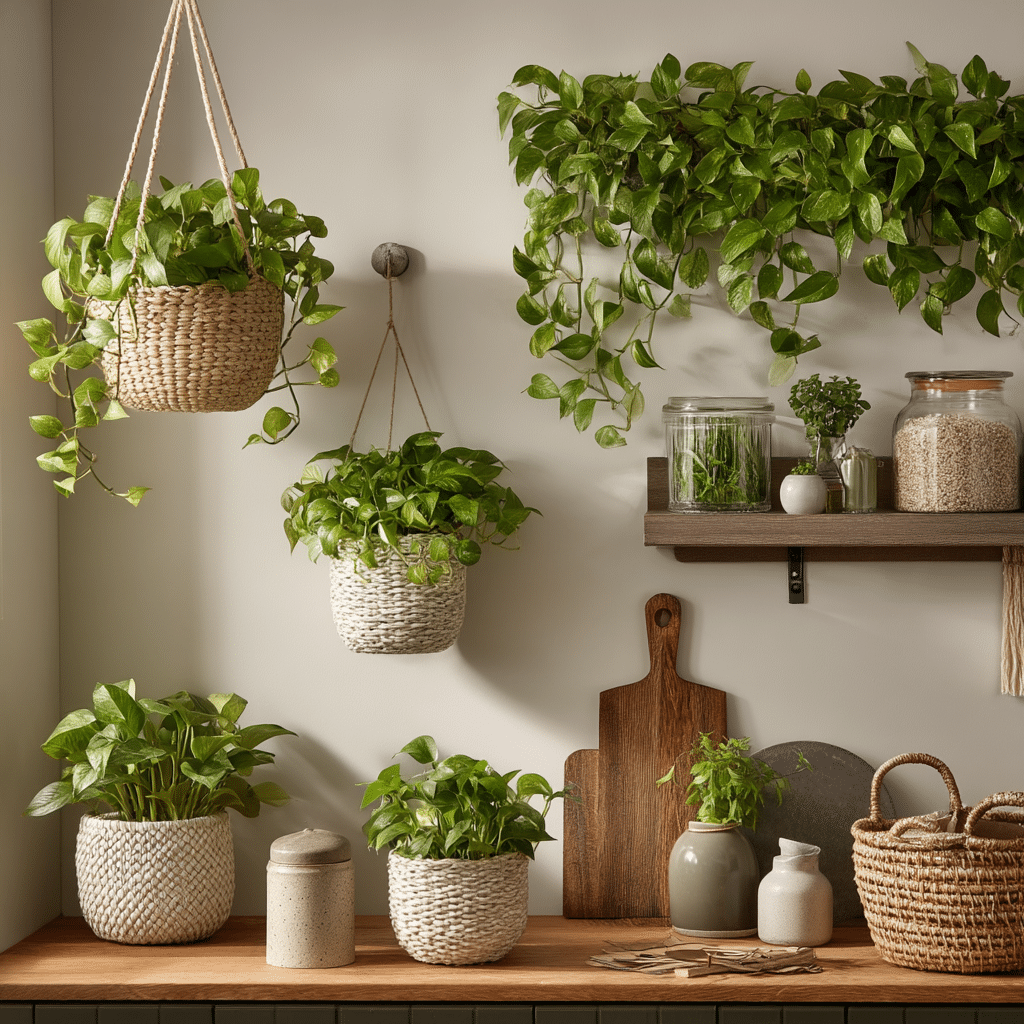
The pothos plant isn’t just easy to grow—it’s also incredibly versatile in how you can use it indoors. Whether you’re styling a space or improving air quality, pothos brings both beauty and function.
Creative Indoor Uses
- Hanging baskets – Let vines cascade beautifully from shelves or ceiling hooks
- Wall-mounted planters – Create a vertical green display
- Tabletop jars – Grow in water for a clean, minimalist look
- Bookshelf accent – Let vines weave through books and decor
Its flexible stems and lush foliage make it perfect for compact apartments, home offices, bathrooms, or anywhere needing a touch of green.
Proven Benefits
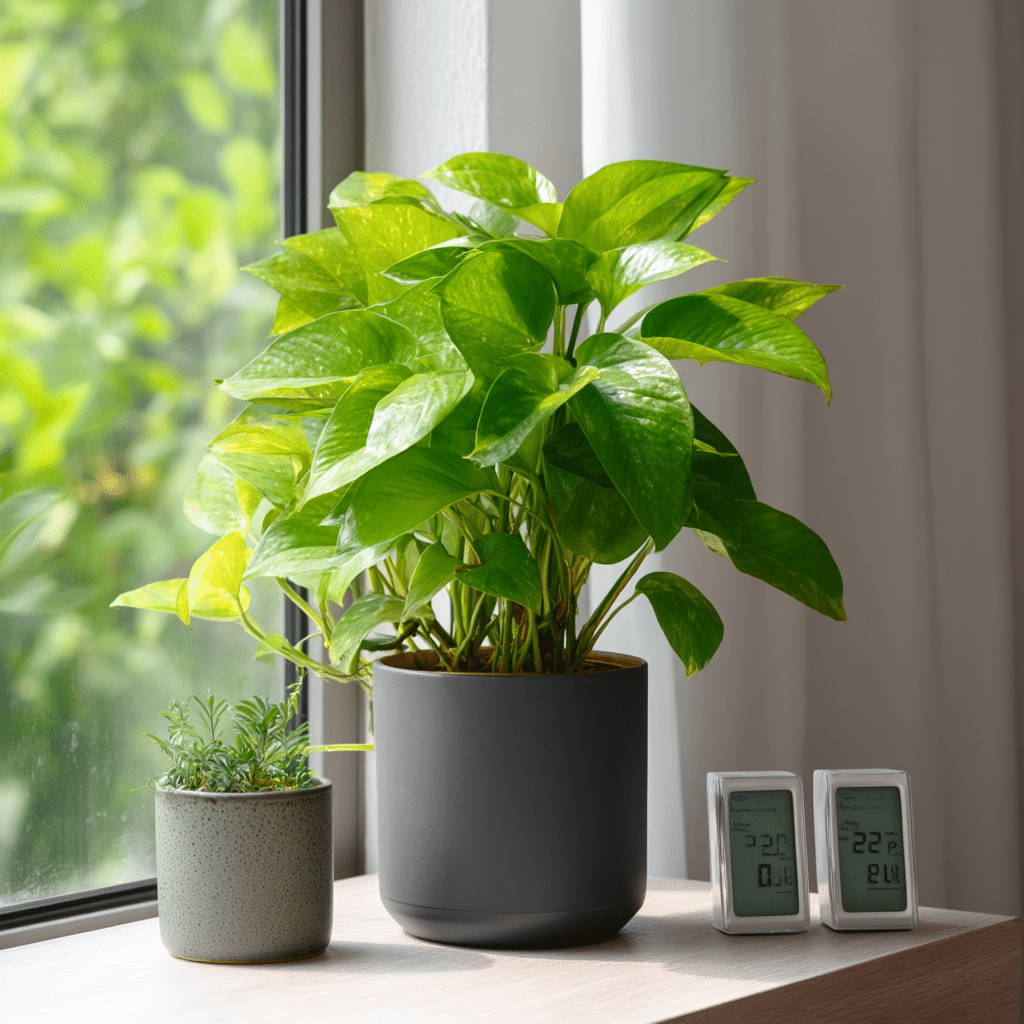
- Air purification – Known to remove toxins like formaldehyde and benzene, according to NASA studies
- Mood booster – The green foliage has a calming visual effect, especially near screens or workspaces
- Good luck plant – In Feng Shui and Vastu, the pothos plant is said to bring prosperity and positive energy
With so many practical and aesthetic uses, it’s no surprise the pothos plant is considered one of the best all-around houseplants.
Conclusion
The pothos plant is one of the easiest and most rewarding indoor plants you can grow. Its adaptability to light, low-maintenance care, and decorative potential make it a top choice for plant lovers of all experience levels.
Whether you grow it in soil or water, trail it from a basket or climb it up a moss pole, the pothos brings life, beauty, and even cleaner air into your home.
With just a little attention to its needs, your pothos will thrive for years—and likely multiply across your space with ease.

